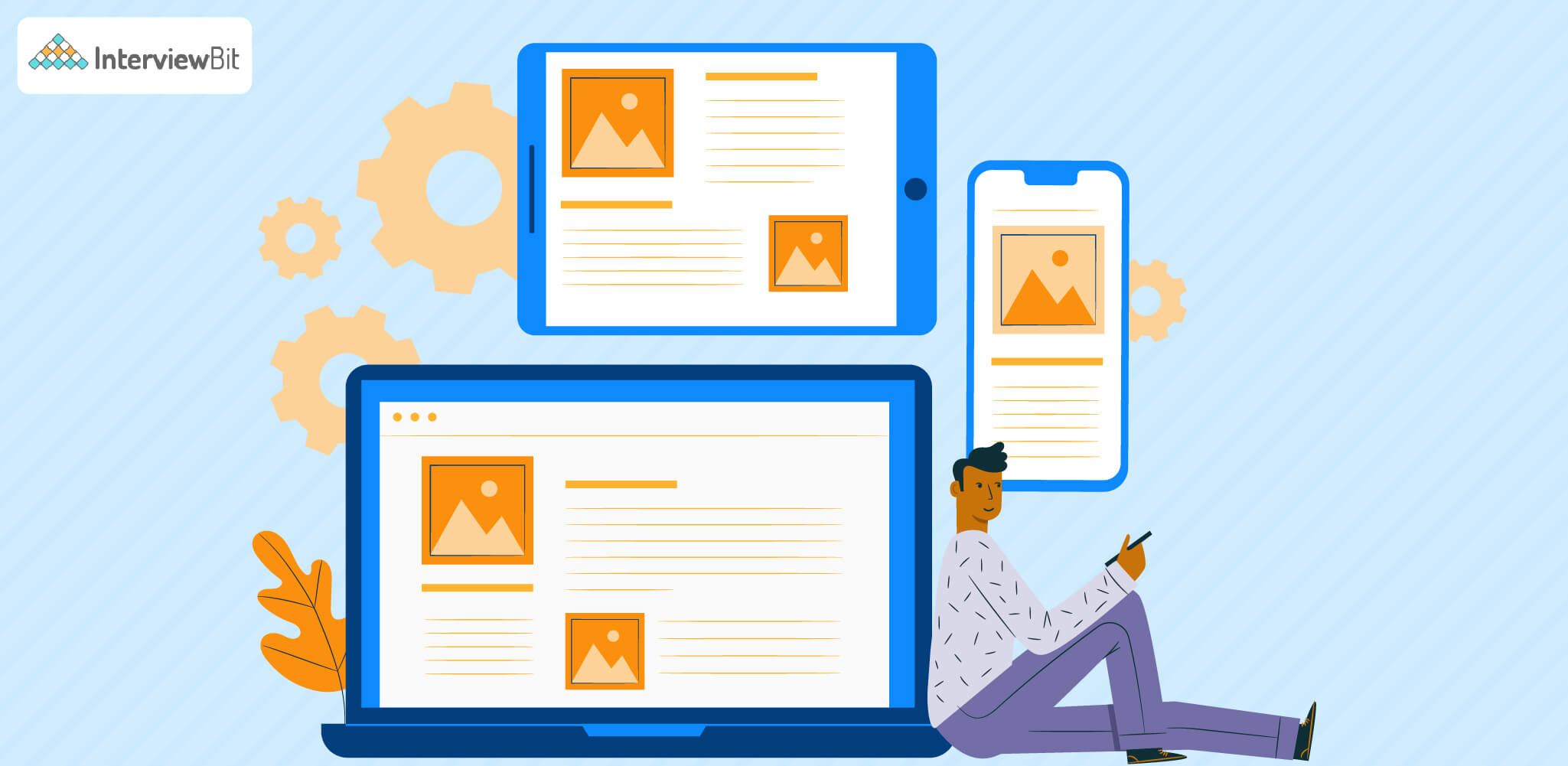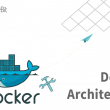As a task for this article, we would like you to visit the website of Scaler Academy. Did you see something similar to this?

Notice the form in the right-hand corner?

It asks for your contact details to book a demo class. Ever wondered what happens when you click that red button? Where and how does your info go? It’s not magic – it’s the Backend.
Confused about your next job?
With all upsurge in technological advancements, we got exposed to a new domain known as Web Development. Web development is the building and maintenance of websites; it is the functionality that works behind the scenes to make a website look great and perform well according to the demand of the users.
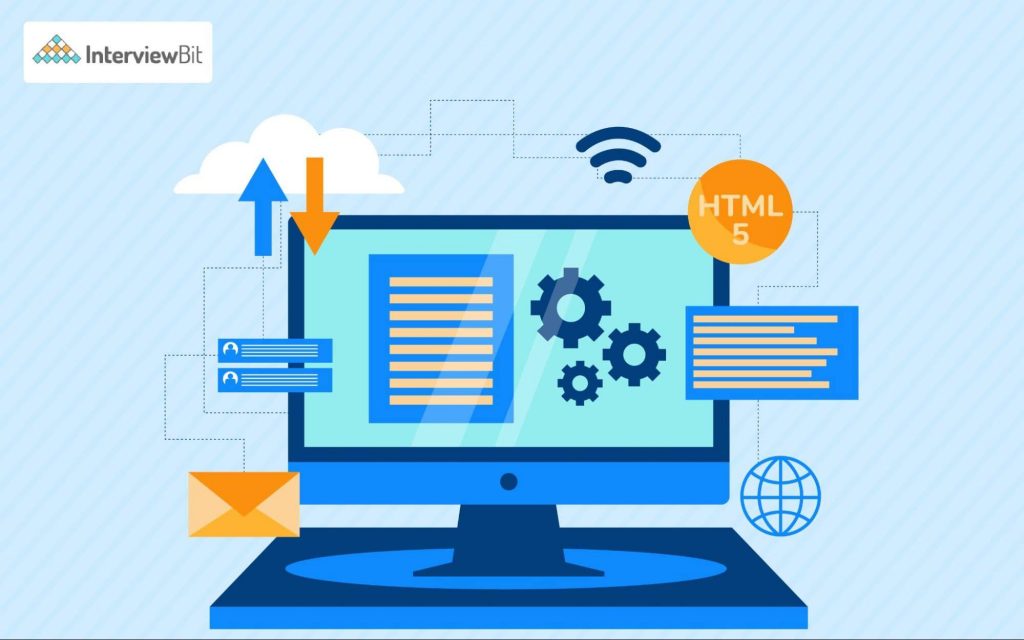
Web development is mainly divided into two parts- Frontend and Backend.
The front end is all that the user sees i.e. the visuals and the designs. And the backend is all logic that makes things happen. The backend is server-side, dealing with databases, logic, and APIs. In the scaler website, for example, all the functions, like adding data and pressing buttons, were handled on the front end, while everything behind the scenes, like collecting, processing, encrypting, and adding form data to the database, was handled in the backend.
This article will discuss the Top skills required to become a Backend Developer.
- What is Backend Development?
- Top 10 Skills for a Backend Developer:
- 1. Backend Programming Languages
- 2. Knowledge of Databases –
- 3. Knowledge of APIs
- 4. Knowledge of Servers
- 5. Knowledge of Front-End Technology
- 6. Knowledge of Back-End Frameworks
- 7. Version Control System
- 8. DSA (Data Structures and Algorithms)
- 9. Problem Solving
- 10. Communication Skills
- Back-end Developer Job Description
- Conclusion
- Frequently Asked Questions
- 1. What is the difference between frontend and backend development?
- 2. What should I learn to become a backend developer?
- 3. Is Python frontend or backend?
- 4. Which Language is best for the backend?
- 5. Which is the easy frontend or backend?
- 6. Are backend developers paid more?
- 7. What is the backend developer’s salary?
- Additional Resources
What is Backend Development?
Backend Development is also known as server-side development. It is everything that the users don’t see and contains behind-the-scenes activities that occur when performing any action on a website. It focuses primarily on databases, backend logic, APIs, and Servers.
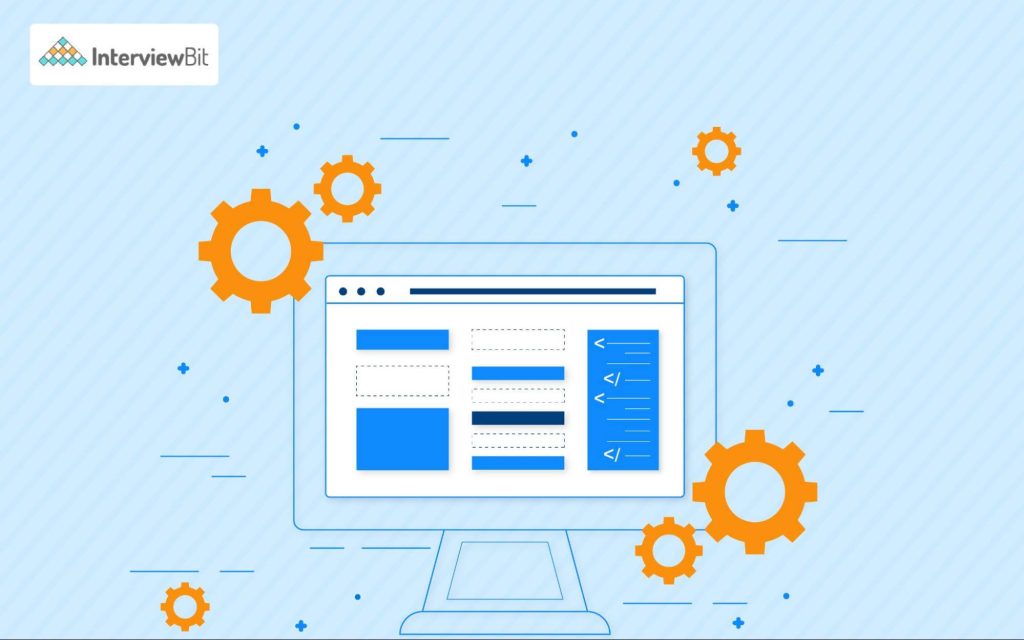
The backend of a website is a combination of servers, applications, and databases. Code written by backend developers helps browsers in communicating with the databases and store data into the database, read data from the database, update the data and delete the data or information from the database.
Recall the example of the scaler website. What do you think happens when you submit your details? To give a brief overview, let us see the following diagram:
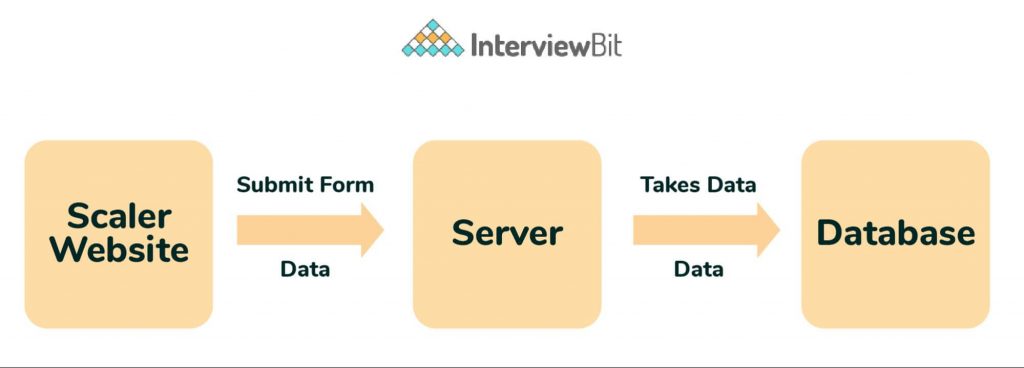
When you click the submit button after filling in your details, they are sent to the server that then processes your data and stores it in the database. Now we have the details shared by you in our database. But did you see any of this happening? No, because it happened behind the scenes. Thus, it is known as the backend. It is just an overview of what the backend is, but this is not it, there is a lot to it.
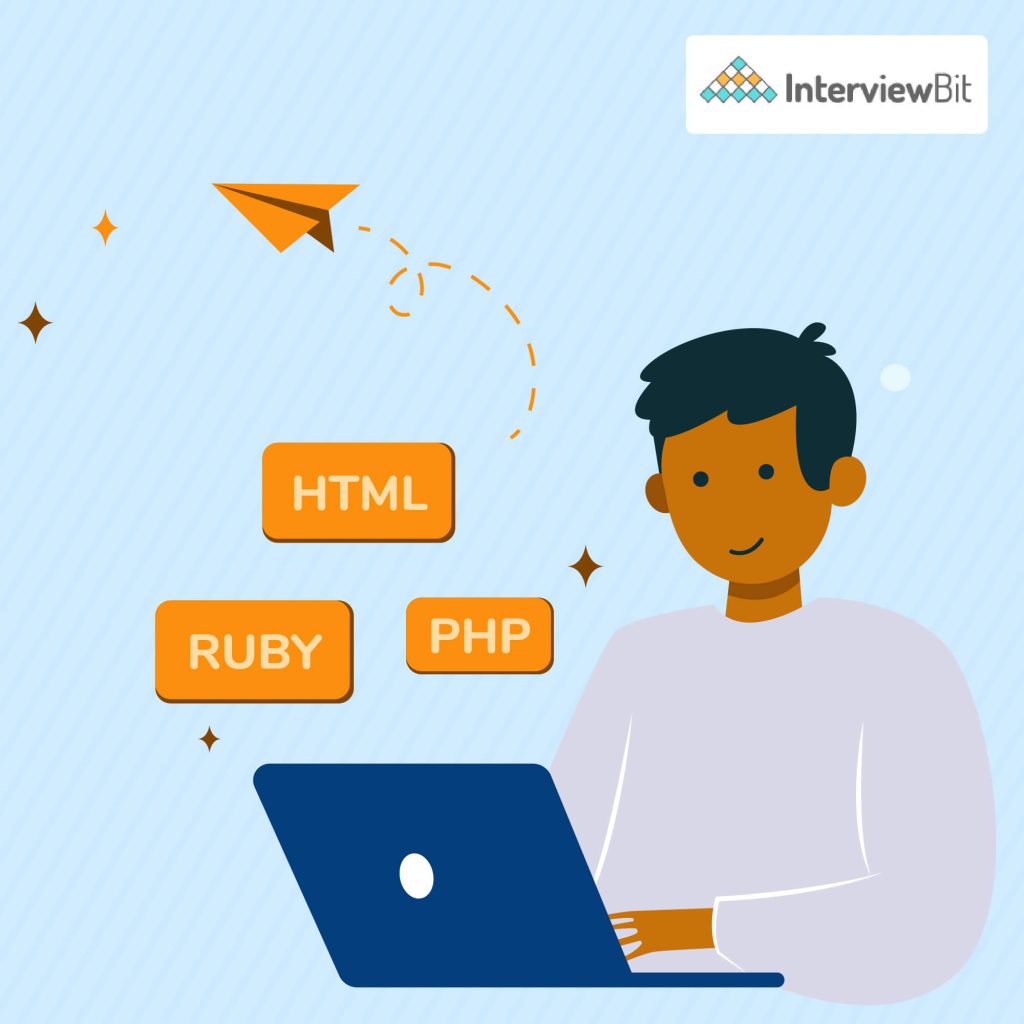
Now that we have an idea of what backend is, let us discuss what backend developers are.
A backend developer is one who makes use of the technology required to develop the products for the backend of any website. A backend developer is responsible for building the structure of a software application.
Backend developers typically work in groups or with a team. Large teams include both backend and frontend developers where both the developers collaborate to develop viable products. Backend developers collaborate with frontend developers, principal architects, product managers, and testers to contribute their part and develop a product.
Backend developers use various kinds of tools, languages, and frameworks to accomplish these tasks. To do all this, they use a variety of server-side languages, including Java, .NET, PHP, Ruby, NodeJS, and Java. They also use tools like MySQL, MongoDB, Oracle, and SQL servers to create, read, update or delete data and serve it back to the client side or the front end of the application.
Top 10 Skills for a Backend Developer:
The following are the 10 Essential Skills for Back-End Developers:
1. Backend Programming Languages
Backend developers use different programming languages. Two main categories are:
- Object-oriented (OOP): Organizes code into reusable building blocks called classes and objects. Common languages include Python, Java, and .NET.
- Functional Programming: Focuses on mathematical functions, minimizing shared data. Languages like Haskell, Clojure, and SQL are examples.
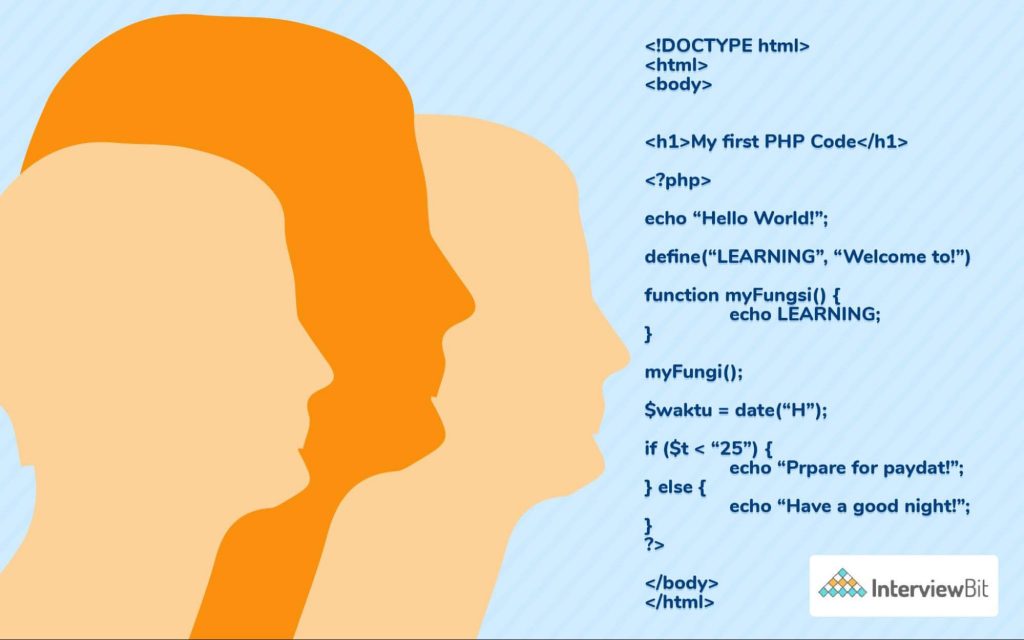
Backend Programming Languages-
- PHP: A scripting language for dynamic websites. Easy to learn and widely used for web forms and databases.
- Python: Versatile language with clear syntax, great for web frameworks and even deploying machine learning on websites.
- Ruby on Rails: Ruby language allows rapid web app development. Ruby on Rails framework simplifies coding.
- Java: Popular, platform-independent, object-oriented language used for versatile tasks like database connections and networking.
- .NET: Framework for building web apps using languages like C#. Supports various platforms, including macOS, Windows, and Linux.
2. Knowledge of Databases –
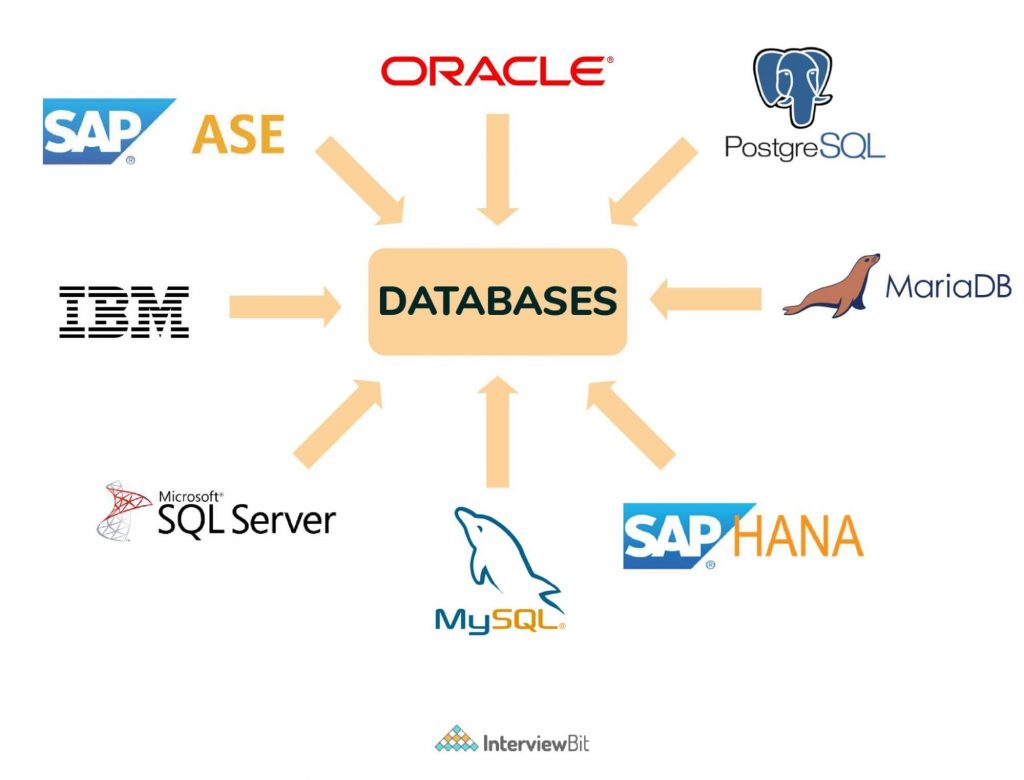
Every website needs a database to deal with client data. A database stores the data and site content in a way that makes it simple to recover, arrange, alter, and store information. A backend developer should have extensive knowledge of various DBMS technologies.
There are two types of databases available in the market – SQL, and NoSQL.
- SQL: A SQL database is one where the data is mapped in a table and each one is linked to another in a significant way. SQL databases work on queries and produce results based on them. Eg. MySQL, PostgreSQL.
- NoSQL: In the NoSQL database where, unlike SQL, there is no need to structure the data beforehand. NoSQL databases work essentially on JSON and XML. E.g. MongoDB, and Cassandra.
3. Knowledge of APIs
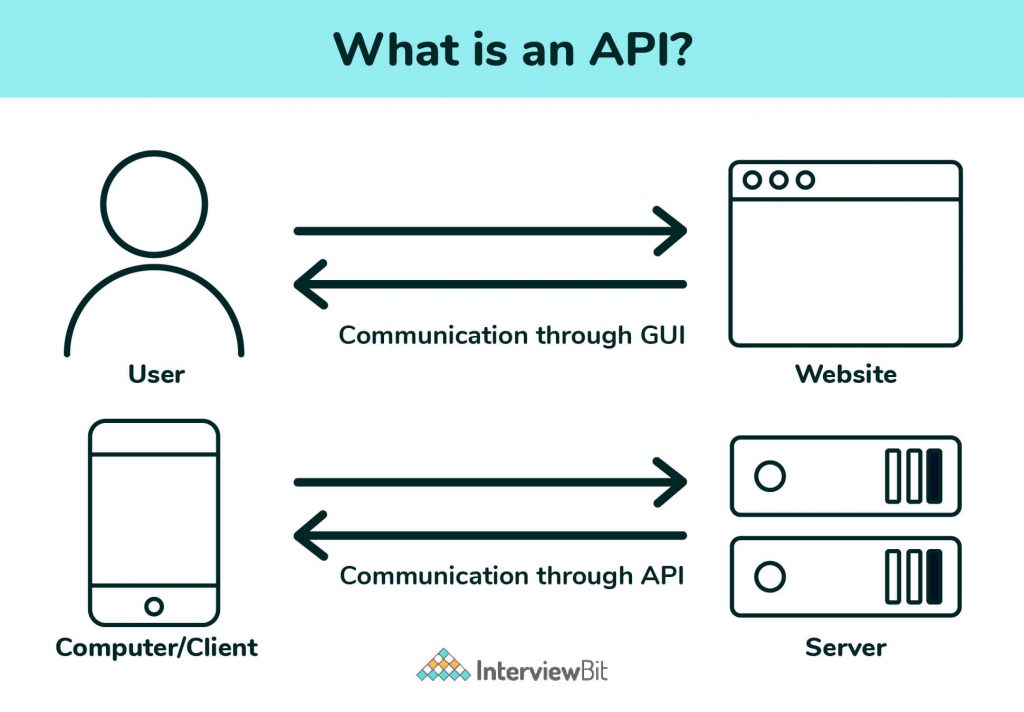
APIs (Application Programming Interfaces) facilitate software communication. They help different systems talk to each other, using HTTP methods like GET, POST, PUT, and DELETE. Backend devs create APIs to fetch user data, enhancing user experience.
4. Knowledge of Servers
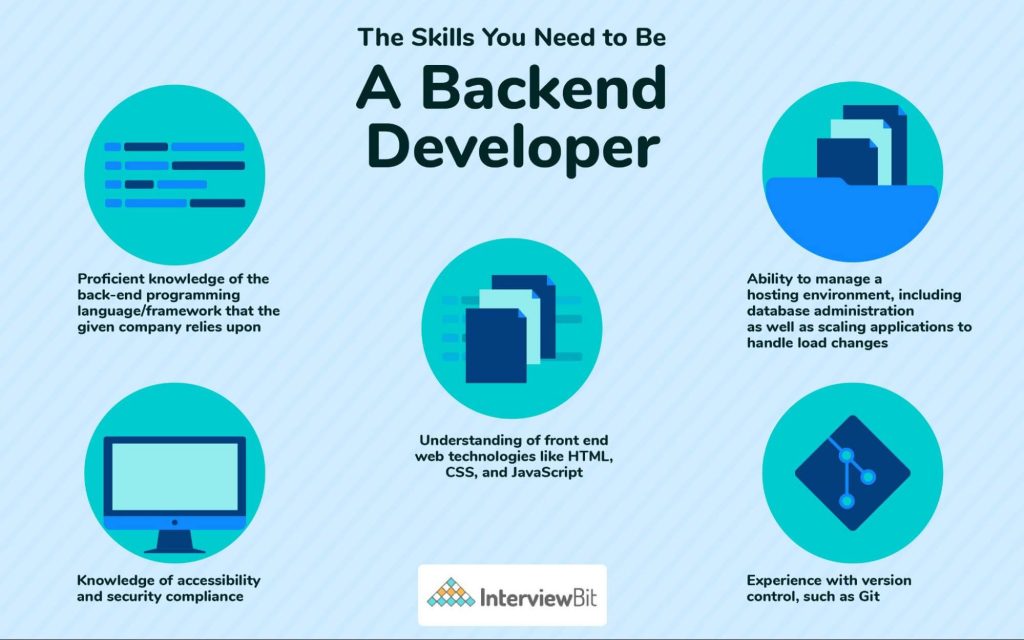
Every web application that you see today runs on a remote PC called a server. On the internet, the term “server” is commonly used to refer to the computer system that receives requests for web-based files which includes HTML, CSS, Javascript, etc., and sends those files to the client.
Since servers are the most commonly used medium to deliver important services, most servers are never turned off. This part of the servers makes it an essential element for a backend developer to learn about. Some examples of servers are Apache, Nginx, IIS servers, and Microsoft IIS.
5. Knowledge of Front-End Technology
While you primarily dwell in the backend world, a touch of frontend knowledge can significantly elevate your capabilities. Understanding basic front-end languages like HTML, CSS, and JavaScript is essential. These languages give you the power to communicate with computers, instruct them effectively, and create engaging user experiences.
JavaScript, in particular, is a key player, forming the foundation of front-end development. It breathes life into web pages, enabling dynamic elements and animations. CSS adds style and layout, while HTML provides the structural framework. Just as humans have skeletons, websites have HTML, a fundamental component in creating functional and attractive web interfaces.
6. Knowledge of Back-End Frameworks
Choosing a programming language is just the start; you need to embrace its ecosystem with backend frameworks. These frameworks streamline your development process, providing ready-to-use tools and libraries. Here are some standout options:
- Ruby on Rails: Revolutionize your development process with Ruby on Rails. Packed with automated testing, libraries, and scaffolding, it’s your ticket to efficient localization. This open-source framework, written in Ruby, crafts seamless web apps.
- Node.js: Embark on a coding journey with Node.js, an open-source platform for backend development. With JavaScript at its core, it’s a veteran framework that’s cross-platform and compatible with Windows, Linux, and macOS.
- Express.js: Zoom ahead in your development race with Express.js, built on the wings of Node.js. Its blazing speed and reliability make it a favourite among backend developers. Ideal for APIs, it shines in crafting web and mobile applications.
- Django: Unleash the power of Python with Django, an open-source gem that’s captured developers’ hearts. Django’s magic lies in its minimal code requirements and rapid app development prowess. Say goodbye to complexity.
- Flask: Elevate your web app game with Flask, a Python-based framework for modern creations. From WSGI assistance to rapid templating, it boasts an in-built development server. Your express route to innovation.
7. Version Control System
As code evolves, version control systems become invaluable. These systems track code changes, making it easy to revert to earlier versions and safeguarding your source code. Here are a couple of notable systems:
- AWS Code Commit: Amazon’s secure version control system, perfect for managing source code and data.
- GitHub: A popular open-source community fostering collaboration and contribution among developers globally.
- GitLab: A comprehensive platform enabling collaboration and efficient software development through streamlined communication.
8. DSA (Data Structures and Algorithms)
Effective data management is paramount. A strong grasp of Data Structures and Algorithms ensures efficient data handling, retrieval, and memory management. These concepts optimize your code and enhance your backend prowess.
9. Problem Solving
Backend developers are the troubleshooters of the digital world. Cultivate your problem-solving abilities to navigate challenges seamlessly. Your role involves keeping websites running smoothly and making strong problem-solving skills an indispensable asset.
10. Communication Skills
Backend development thrives on effective collaboration. Despite the intense focus, you must communicate proficiently with your team, clients, and managers. Successful projects rely on clear discussions and idea exchanges. Sharpen your communication skills for harmonious teamwork.
Back-end Developer Job Description
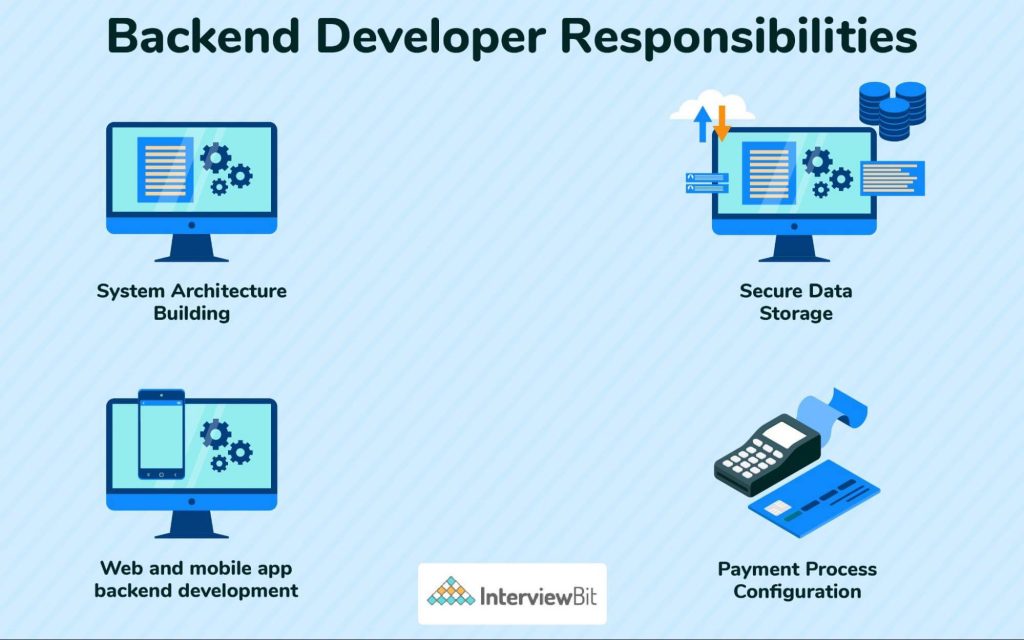
The responsibilities of a backend developer include writing APIs, interacting with the database, creating libraries, and improving the data architecture. Some more responsibilities of a backend programmer are –
- Coordinate with frontend developers and develop server-side algorithms to transfer data efficiently to the client-side web applications.
- Cross-collaborate with PM(Project Manager), and QA (Quality Assurance) engineers to optimize and develop a quality User Experience (UX).
- Make sure the application is fast and performs the same whenever the user traffic changes.
- Collaborate with the stakeholders to understand their particular needs, then translate those into technical requirements and come up with the most effective and efficient technical solution.
- Optimize the applications for increasing response time and efficiency.
- Analyze the requirements and goals, handle bugs and errors, and come up with efficient and fast solutions.
- Interact with the database for storing data.
- Manage and develop APIs (they help two software communicate with each other over the internet) that are executed across the devices.
- Building the architecture of the system while keeping in mind the scalability, speed, and stability of the applications.
- Implementing security structures and their best practices.
- Writing reusable code and libraries for future implementation.
Conclusion
The web is a rapidly evolving universe. Everything that we use and see in our daily lives has moved to the web. With this technological upsurge, the demand for backend developers is also rising. So if you are planning to give direction to your career, backend development is a good choice to have a thrilling and exciting career.
Frequently Asked Questions
1. What is the difference between frontend and backend development?
Frontend refers to the user-facing, whereas backend refers to the server-side of a website or application. They are like two sides of the same coin. Though both are crucial to web development, they differ in their roles, responsibilities, and the environments they work in. The front end is simply what users see whereas the back end is how everything is working behind the front end.
2. What should I learn to become a backend developer?
Backend developers should have sound knowledge of at least one of the backend and server-side programming languages. They must also know how to create, read, update and delete (known as CRUD operations) data from a database and communicate it to the user-facing side of the server. Backend developers must be proficient in handling APIs and the HTTP protocols along with version control systems like Git.
3. Is Python frontend or backend?
Being a general-purpose language, Python can be used as both the frontend and backend. Due to its easy syntax and widespread use, Python is a core programming language for back-end development. There are many development frameworks built upon python including Django which can be used for both frontend and backend and Flask. Front-end Python is not unheard of, it’s just not preferred.
4. Which Language is best for the backend?
Every language has its own use cases, advantages, and disadvantages. And it depends on the developer as to which language he/she feels comfortable. However, some languages are preferred over others due to the ease of use and the community background behind them.
This graph shows the popularity of different programming languages –
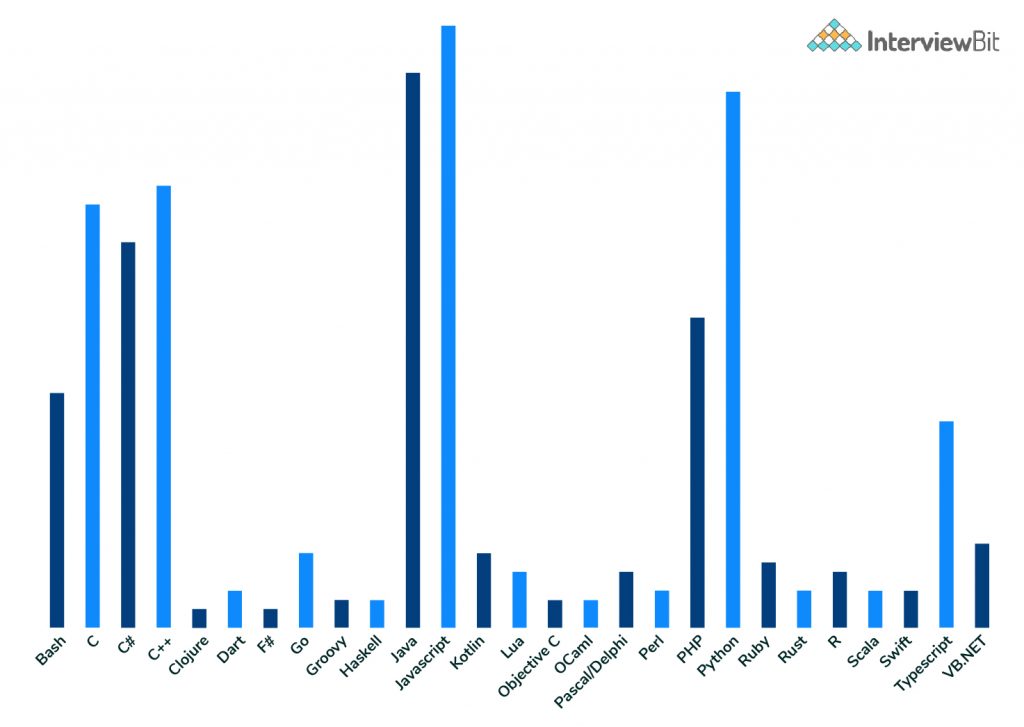
Developers’ most well-known (black color) and in-demand (yellow color) programming languages.
5. Which is the easy frontend or backend?
There’s a general perception that the frontend is easier than the backend. This is true on a beginner level. In reality, mastering either of these two requires a lot of patience and hard work.
6. Are backend developers paid more?
Since backend developers are involved in a more technically complex role, they can expect an average salary higher than that of front-end developers. According to payscale, the average market salary of a Backend Developer is $130K, whereas the average salary of a Frontend Developer is $115K. Though backend developers earn more on average, these salaries heavily depend on the skills that a developer possesses and both can earn equally at the higher levels.
7. What is the backend developer’s salary?
According to payscale, the average annual salary of a backend developer is around $130K.
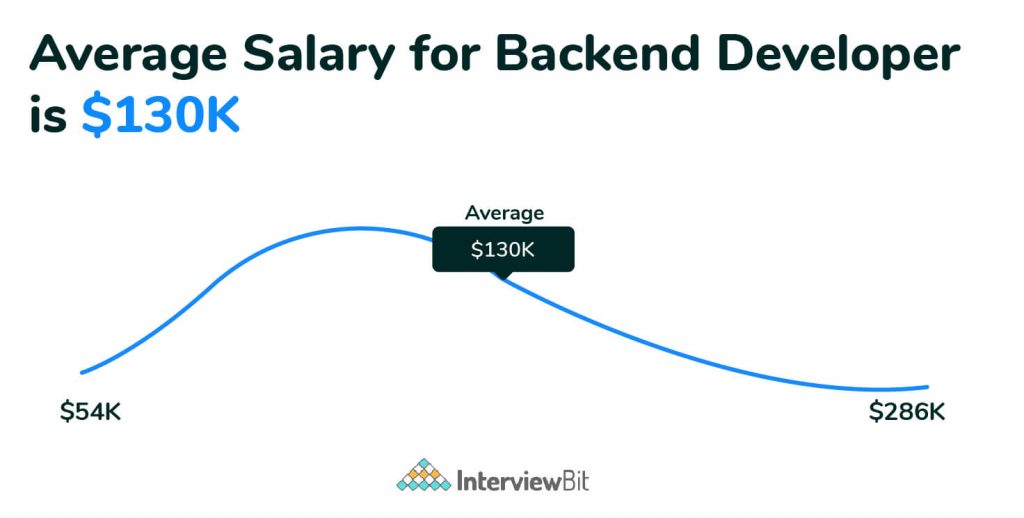
In India, this figure is nearly Rs. 1,200,000 per annum.
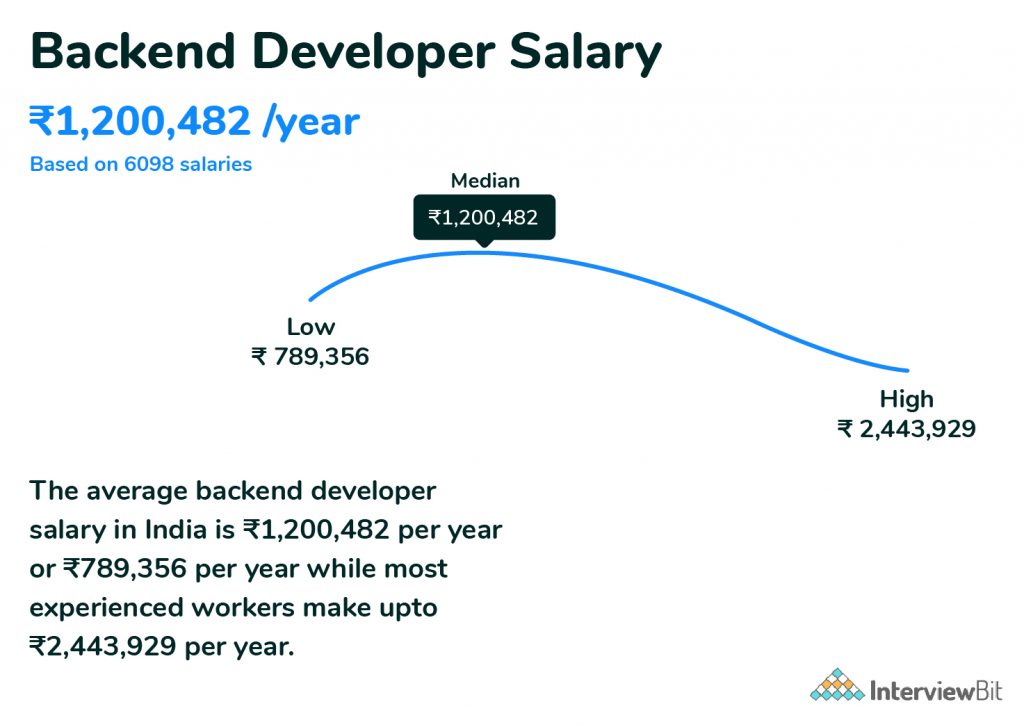







 Join WhatsApp Group
Join WhatsApp Group
